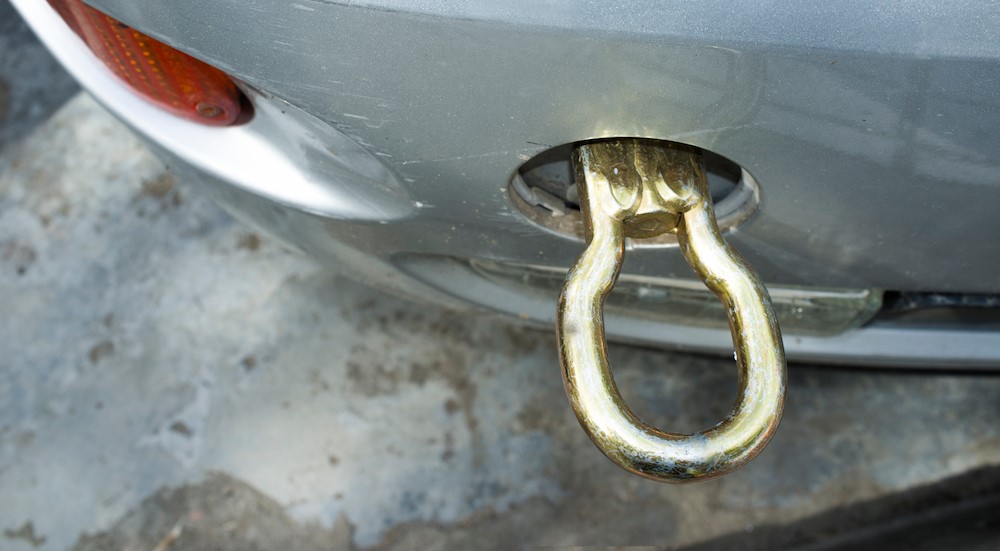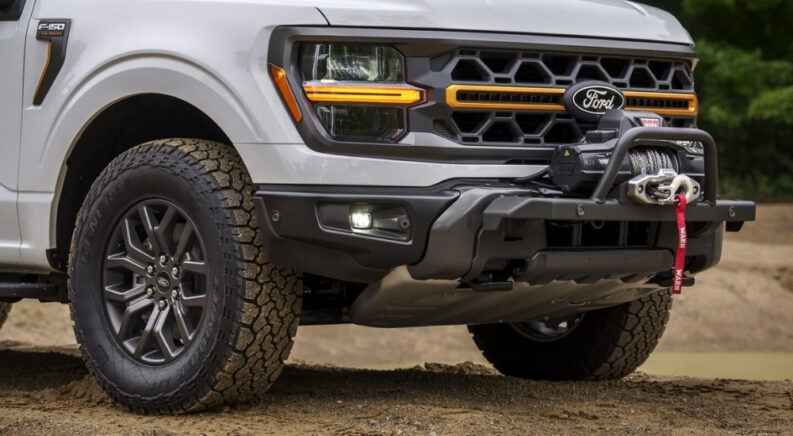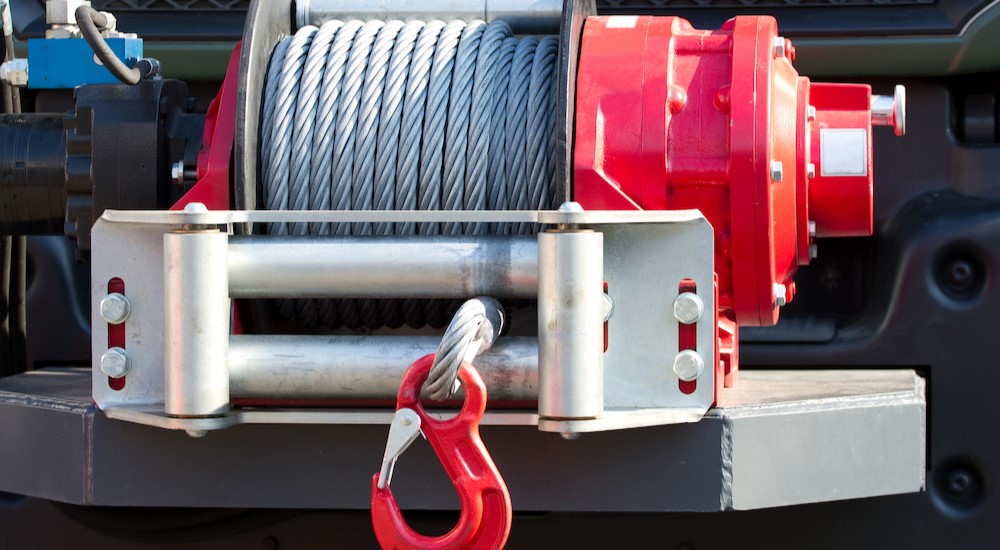So, you recently bought a truck or an SUV with a winch, or installed a winch or your vehicle; now what? A winch is an incredibly versatile tool that can help you explore more technical terrain confidently. Why? The winch mounted on your bumper can help get you or another vehicle out of a dicey situation when the loss of traction becomes insurmountable. However, there’s a lot to learn about using this tool properly. Here’s a closer look at situations where your winch can be helpful and a step-by-step guide to safely operating this recovery tool.
Winch Basics: Scenarios and Common Types of Winches
Winches are designed to move large objects, like cars, boats, boulders, and more. If you’ve ever spent time on a boat, you’ve seen a basic winch in action. Every boat trailer has a winch at the front, which lets you move the boat onto the trailer and secure it into position. The winch on your vehicle is ideal for solo recoveries or to recover another vehicle. This might occur on the trail or in slippery conditions on the road, like hydroplaning during heavy rainfall or losing control on ice-covered roads.
There are many different types of winches, each offering advantages in certain situations. For example, manual winches are hand-operated and found on most small boat trailers. Pneumatic winches rely on compressed air for power and are typically used in mining and offshore drilling operations because they’re reliable and durable enough to withstand these harsh conditions. Hydraulic winches are often used in construction and marine industries. So, what type of winch is on your truck or SUV?
Most automotive winches are electric, meaning the winch draws power from the vehicle’s electrical system (i.e. the battery and alternator). They’re versatile, easy to install, and efficient. Moreover, many are remotely controlled, which is critical to your safety, as you’ll see below. So, how do you operate the winch on your vehicle and do it safely?
Operating Your Winch: A Step-By-Step Guide
Towing another car with a winch is straightforward when you know the basic steps and take the correct precautions to ensure your safety and the safety of everyone around you. But what are those steps? Where do you start when your adrenaline is pumping and someone else is relying on your expertise?
#1 – Know Your Equipment and Its Capabilities
The first step in towing with a winch is knowing your equipment and its capabilities. Every winch has a load capacity, which is the amount of weight it can safely move. Exceeding this capacity is dangerous. Because of this, comparing your winch’s capacity with the other vehicle’s weight (including its payload) is critical.
Once you’ve confirmed your winch can support the weight, inspect it by checking the line, hooks, and shackles for signs of wear or damage. Ideally, you want to routinely inspect the winch components to ensure the equipment is always prepared and in working order before you’re in a situation where you have to rely on it. These routine inspections offer peace of mind because, when the unthinkable happens, you know the winch is ready to go.

#2 – Make a Plan
After you’ve confirmed the winch’s capacity and checked the equipment, it’s time to assess the situation and plan the next steps. By this point, your adrenaline is likely pumping because you’re in a scenario beyond the norm. Another vehicle is stuck and needs your help. It’s easy to let the adrenaline rush the process, but it’s essential that you slow down and clear your mind.
Consider the location of the other car and the ideal position for your vehicle. Is there enough room to maneuver your truck to align the winch? What obstacles can potentially get in the way? Are other people present? Is the area congested with traffic? By answering these questions, you’re evaluating the entire situation to ensure your safety and the safety of everyone around you.
#3 – Locate the Recovery Points
Most vehicles have designated recovery points designed to handle the stress of towing without damaging the car, which can occur if you attach the winch to a weaker point like the bumper. The bumper isn’t built to withstand that tension and will rip off like a band-aid. So, how do you know which recovery points are best?
You can identify the recovery points by referencing the vehicle’s owner’s manual. If there isn’t a manual available, you can usually safely use the car’s frame as a recovery point to attach the winch. Many off-road rigs have integrated recovery hooks at the front and rear bumpers, making it easy to identify the best place to attach the line.
#4 – Put on Your Gloves and Grab a Dampener
The winch on your vehicle is a workhorse, but that workhorse can fail and cause severe injuries. At this point, you’ve inspected the winch and located the recovery points. Now, it’s time to grab a dampener and your heavy-duty gloves. The need for gloves is obvious, but what’s a dampener?
A dampener is used to cover the winch line once it’s attached to the other vehicle. Many winch kits come with a dampener, but you can also use a heavy blanket to cover the line. This dampener or blanket mitigates the risk and severity of recoil if the line breaks and becomes a projectile.
#5 – Position Your Vehicle and Attach the Line
With the recovery points identified and your protective gear on hand, move your vehicle into the ideal position that aligns the winch with the other car. Put your vehicle in neutral with four-wheel drive engaged and apply the parking brake to ensure your truck or SUV has a firm stance against the load of the other vehicle. Sometimes, this won’t be enough, and you may have to use the main brakes, chock the wheels, or find another way to anchor your vehicle. Then, attach the winch line to the recovery point on the other vehicle. Once it is attached, use your dampener to cover the line.
#6 – Clear the Area and Start Winching
It’s time to start the winch process, but before you grab the remote to your winch or press any button, ensure the area is clear. Towing a vehicle with a winch is dangerous because winch lines can snap from excessive tension or damage. There’s also the risk of misjudging the other vehicle’s weight and payload against a winch’s capacity.
A snapped line is a dangerous projectile, making it critical to check the area and keep the other driver, passengers, and everyone else away from the line before you start the process. Once clear, run the winch slowly, monitoring the tension on the line and the vehicle’s position. In some instances, you may have to stop and readjust to ensure the car avoids nearby obstacles and is in the best position for recovery. Whatever the situation, maintain a safe distance from the winch as it runs, and never climb over a winch line that’s under tension.
#7 – Release the Winch and Secure the Line
Once the other vehicle is safely positioned, engage its parking brake and disconnect the winch line. Then, slowly rewind the winch. This gives you another opportunity to inspect the line, noting if it’s dirty or damaged. If your line is muddy or you’re in a hurry, it’s okay to simply coil it up and secure it to the bumper until you can clean it and rewind it properly.
What Else Should You Know?
One of the biggest takeaways from towing another vehicle with a winch is knowing the importance of taking your time. Why is this worth mentioning again? If you rush through the process, you can miss important details. Every winch is rated differently, meaning your winch might not be rated for your friend’s SUV stuck on a trail deep in the woods. Likewise, rushing through the situation may cause you to miss damage on the line, which can cause it to snap, recoil, and become a projectile. These situations are avoidable when you step back and assess the situation, evaluate your equipment, and make a plan without letting adrenaline rush the process. Now, get out there and put your new winch to good use!


